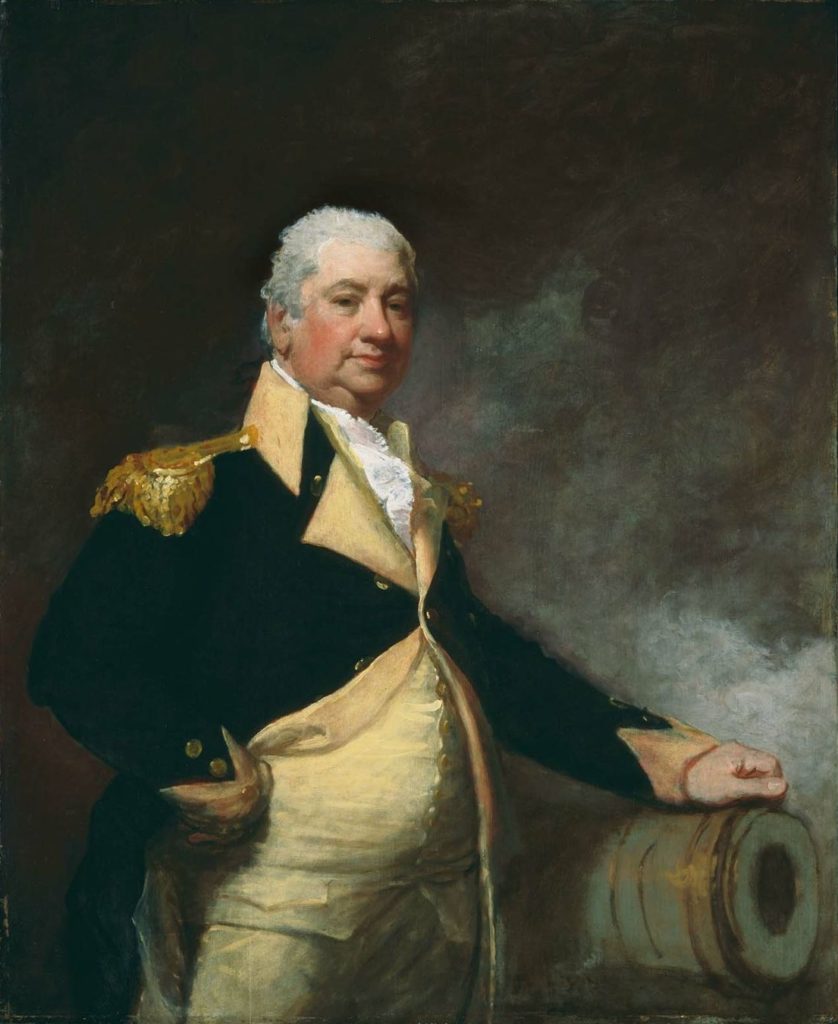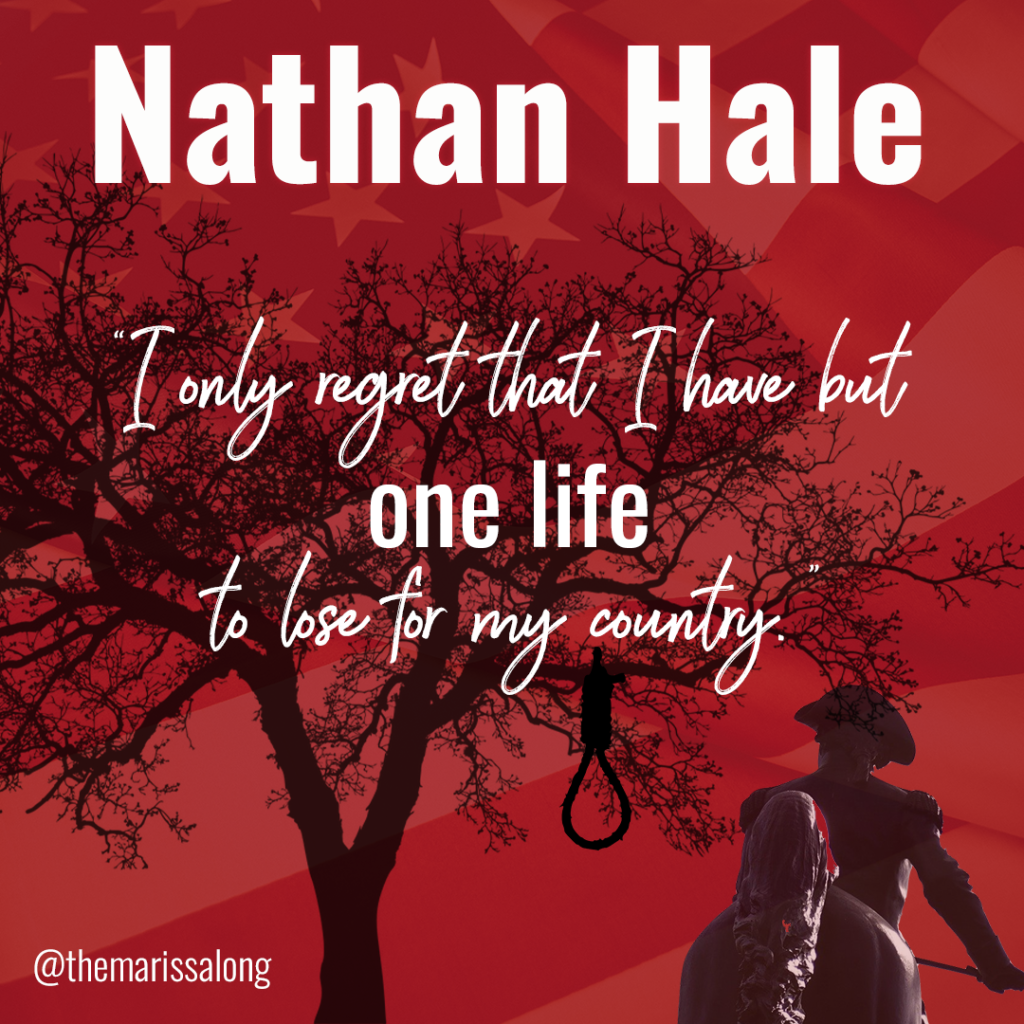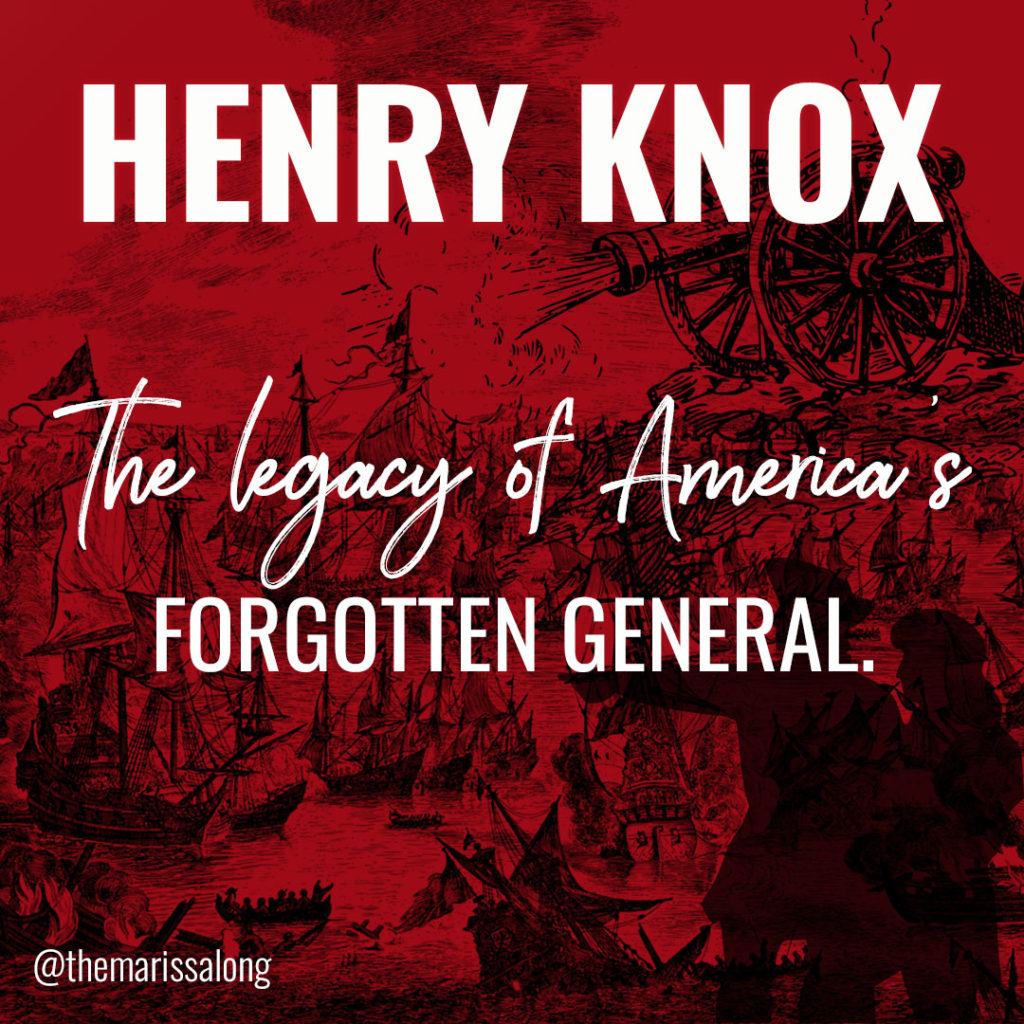Henry Knox is the type of man out of which stories are made and movies are created. He was a victim of poor circumstances but rose out of the ashes to become one of the most powerful and most decorated military heroes of the American Revolution. Here is the history of Henry Knox and how the child of a single mother rose out of financial destitution to become a flourishing entrepreneur, faithful husband and father, and true American patriot.
When Henry Knox Was Born
Henry Knox did not have privilege.
Henry was born July 25, 1750. His father, William Knox, was a Scottish immigrant to Boston who aided in the establishment of the Church of the Presbyterian Strangers. In 1762, while on business in the West Indies, William Knox died, leaving Henry Knox as the sole provider of the family at the tender age of 12.
At that point, Henry was raised by his now-single mother (Mary Campbell) in poor financial conditions in early Boston. He only received a fifth-grade education, but his intellect matched his large, 6-foot frame: he devoured any book he could get his hands on.
Henry proved himself as he made a living as a bookbinder at Wharton and Bowe’s Book Store. By the time he was 21, he successfully opened his own bookstore, called the London Book Shop. His shop attracted many wealthy patrons, including John Adams who was impressed by Knox’s “pleasant manners and inquisitive turn of mind” (Mount Vernon Website).
Henry Knox loved military tactics and weaponry, so he read voraciously on these topics, even teaching himself to read and speak French so he could study untranslated works on artillery.

Want to read more? Check out “Preserving America’s Rugged Individualism”!
Henry Knox in the Military
On March 5, 1770, Henry was 19 and witnessed history when he watched the Boston Massacre and saw 5 colonists killed.
Not long after, in 1772, at age 22, Henry joined a militia unit called the Boston Grenadier Corps where he quickly rose through the ranks and became first lieutenant and second in command.
In 1773, he had a hunting accident in which his gun misfired and blew two fingers off his left hand. He always covered his hand with a handkerchief to cover the wound.
On December 16, 1773, Henry served on guard duty, ensuring that “no tea was unloaded from the ship Dartmouth until the night Sam Adams and the Sons of Liberty arrived.” He was six feet tall and weighed over 250 pounds (American Minute).

Henry Knox Gets Married
One of the most striking facts about Henry Knox’s history was his beloved and faithful wife, Lucy Flucker Knox. She was “possibly the most educated and aristocratic young lady to be found in the American colonies”, but she fell for Henry nonetheless.
Lucy’s parents strongly disapproved of their daughter’s interest in Henry, especially since they were Loyalists, and Henry Knox was quite obviously a patriot rebel. They endeavored to get Henry to take a commission in the British Artillery, but he refused, and the two lovers were married June 16, 1774. Lucy’s parents disowned their daughter.
Despite hard beginnings, the couple was deeply in love, and Lucy affectionately dubbed him her beloved Harry. The couple had thirteen children, but tragically, ten of them died at a young age.
The British Invade Boston
In May 1774, British General Thomas Gage became Military Governor of Massachusetts and “commenced a blockade of Boston’s Harbor by British ships” on June 1, 1774 (American Minute). General Gage’s 4,000 British troops confiscated nearly 2,000 muskets from American citizens and promptly listed Henry Knox as a most dangerous person (American Minute).
Henry and Lucy were forced to lodge British soldiers and saw their beloved bookshop looted by the invaders. By the spring of 1775, Henry and Lucy had had enough. Even though Gage forbade anyone to leave Boston, the couple fled on horseback with Henry’s sword secretly sown into Lucy’s cape (American Minute).
Henry Knox Rises Through the Ranks
John Adams put in a good word for Henry, recommending him to Washington as a man who had great “knowledge and abilities in the military way” (MountVernon.org). Henry Knox quickly volunteered to serve his country, and Washington chose Henry Knox as one of his top men to lead the army, describing him as a “big, fat, garrulous, keenly intelligent man (Mount Vernon.org). Washington made Knox a colonel (American Minute).

RELATED: Nathan Hale: The Legacy of One of America’s First Spies
Henry Knox and the History of Fort Ticonderoga
Washington was well-impressed with his new colonel, and Colonel Knox was assigned to one of the most dangerous and important missions of the American Revolution: stealing artillery from Fort Ticonderoga on Lake Chaplain. Knox and his men made a three hundred-mile journey into upstate New York, recovering 59 cannons, among countless other guns, mortar, and artillery.
At Fort Ticonderoga, Knox and his men historically recovered “the 120,000-pound lot of guns, mortars, and cannons,” and “transported the prized convoy by boat down Lake George, and then led a caravan of sleds and oxen to continue the journey overland front he lake’s southern end to Boston” (MountVernon.org). The journey took months.
When they reached the Hudson River, Knox was dismayed that the ice was too thin for him to pull, in his own words, his “42 exceedingly strong sleds” with “80 yoke of oxen” (American Minute).
Patriotic farmers came to the rescue, and Knox wrote the following in his diary on January 8, 1776.
“Went on the ice about 8 o’clock in the morning and proceeded so carefully that before night we got over 23 sleds and were so lucky as to get the cannon out of the River, owing to the assistance the good people of the city of Albany gave” (American Minute).
The three-month journey was dubbed “one of the most stupendous feats of logistics” in history by historian Victor Brooks (American Minute).
Armed with the much-needed artillery that he and his men confiscated, Henry and his men finally made it from upstate New York to Cambridge, MA where, on March 4, the Americans attacked the British.
A diversionary attack was made by the Americans to distract the British. Meanwhile, under Washington’s command, “men wrapped wagon wheels with straw to muffle the noise and frantically moved the cannons up to a strategic point on Dorchester Heights overlooking Boston Harbor” (American Minute).
They also painted logs to look like cannons, in order to frighten the British.
When British General William Howe surveyed the American’s progress the next morning, he exclaimed, “The rebels did more in one night than my whole army would have done in one month” (American Minute).
General Washington ordered a day of fasting on March 7, 1776 to ask the Lord “to bless the Continental army with His divine favor and protection” (American Minute).
On March 7, the day of fasting, General Howe was rallying 3,000 British troops to attack the Americans, but a huge snowstorm whipped the sea into a turbulent state, preventing the British attack on the Americans (American Minute).
On March 8, General Howe sent word to Washington that if the British were allowed to peaceably exit Boston, the city would not be burned as they left, and on March 17, General Howe and the British evacuated Boston without burning it.
Continued Military Operations
After Fort Ticonderoga, Henry Knox continued fighting in the Revolution and even commanded the crossing of the Delaware. He and his men brought “18 cannon over the river -3-Pounders, 4-Pounders, some 6-Pounders, horses to pull the carriages, and enough ammunition for the comming battle. The 6-Pounders weighing as much as 1,750 pounds, were the most difficult to transport to the far side of the river” (Knox Museum).
This powerful maneuver was key in defeating the Hessians at the Battle of Trenton.
Countless battles of the American Revolution are colored with Henry Knox’s name and memory.
Praise from Washington
Washington admired Knox and his efforts at the Battle of Yorktown. He sent a report to Congress that said Knox’s “genius supplied the deficit of means,” and promoted Henry to major general. Henry Knox was eventually was promoted to commander.
He later served as Secretary of War until 1795 and was a staunch Federalist.
Henry Knox’s Later Life
Henry Knox was greatly involved in the founding of America and the uniting of the colonies once the Revolutionary War was over. After his military service concluded, he retired to Thomaston, Massachusetts (now a portion of Maine) and built a three-story mansion called Montpelier.
He continued his legacy in the entrepreneurial spirit, which included quarrying lime, making bricks, joining the agricultural world, establishing a local church, and beginning local milita groups, among many other activities (Knox Museum). Lucy became more reclusive, but Henry continued entertaining guests and providing jobs to countless Americans (Knox Museum).
When Henry Knox Died
Henry Knox continued a vibrant life until, according to tradition, he swallowed a chicken bone at a picnic and died three days later. He died at the age of 56 on October 25, 1806.
His beloved wife, Lucy, lived eighteen more years until she too passed away in 1824.
Conclusion
Henry Knox is a forgotten but prominent figure in American history who contributed to the success of the American Revolution. He was self-taught and pulled himself up by his own bootstraps. He could have played the victim card, but America would never know his story as a man who established himself in society and provided military genius that helped America win the Revolution.
His wife, Lucy, defied all odds, leaving a comfortable, Loyalist home as a young woman to join her husband in the fight for American freedom. She was brave and loyal. Most girls wouldn’t sew their husband’s sword in their cape and flee on horseback out of a city under siege, at the threat of her life, but Lucy Knox did all that and more.
Henry and Lucy Knox are heroes of American history, and the history of Henry Knox teaches us that no matter our cirucmstances, we should not accept the label of victim. He worked hard, educated himself, and surrounded himself with successful people (including his wife). And today, he is a national hero.
